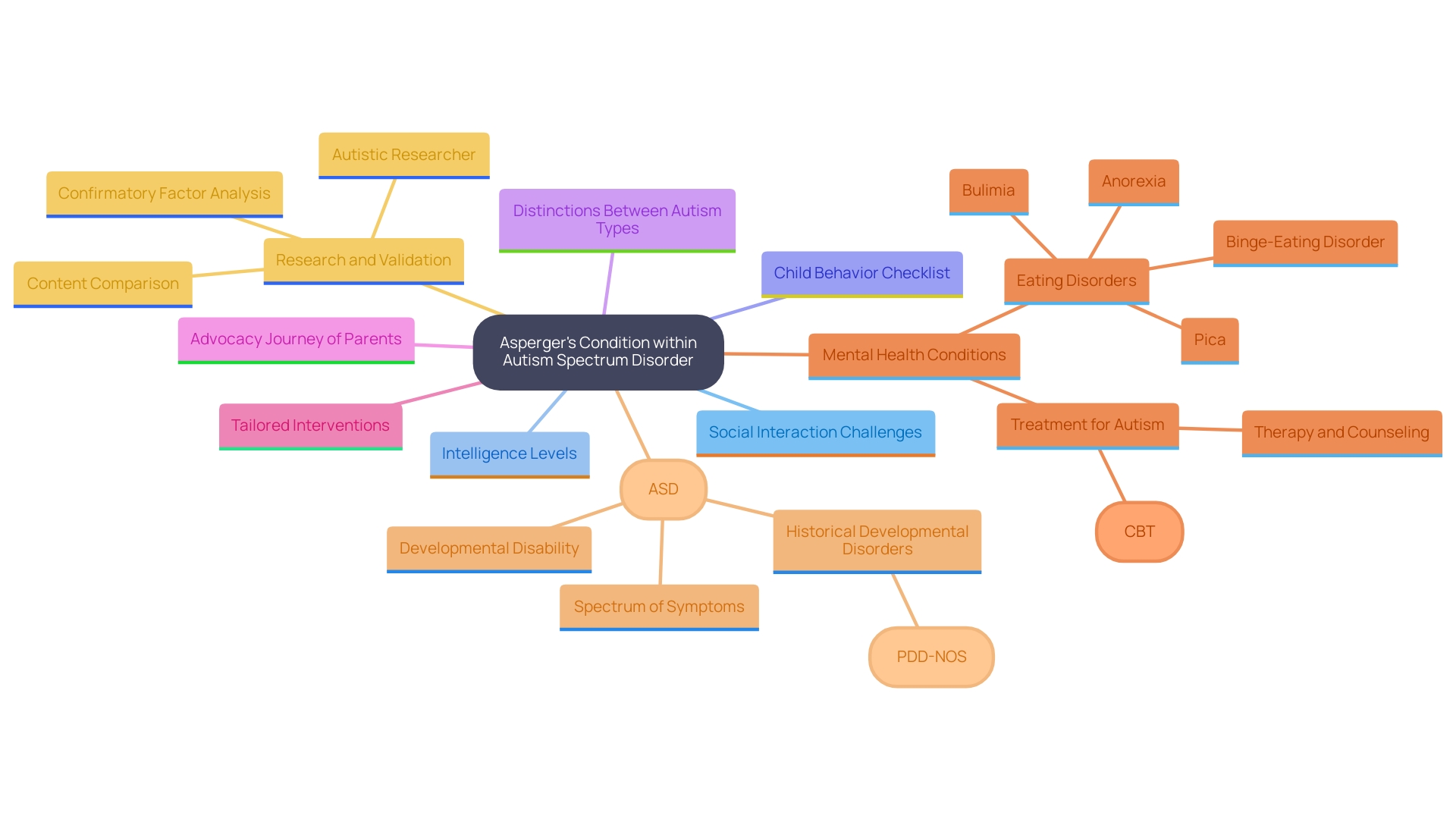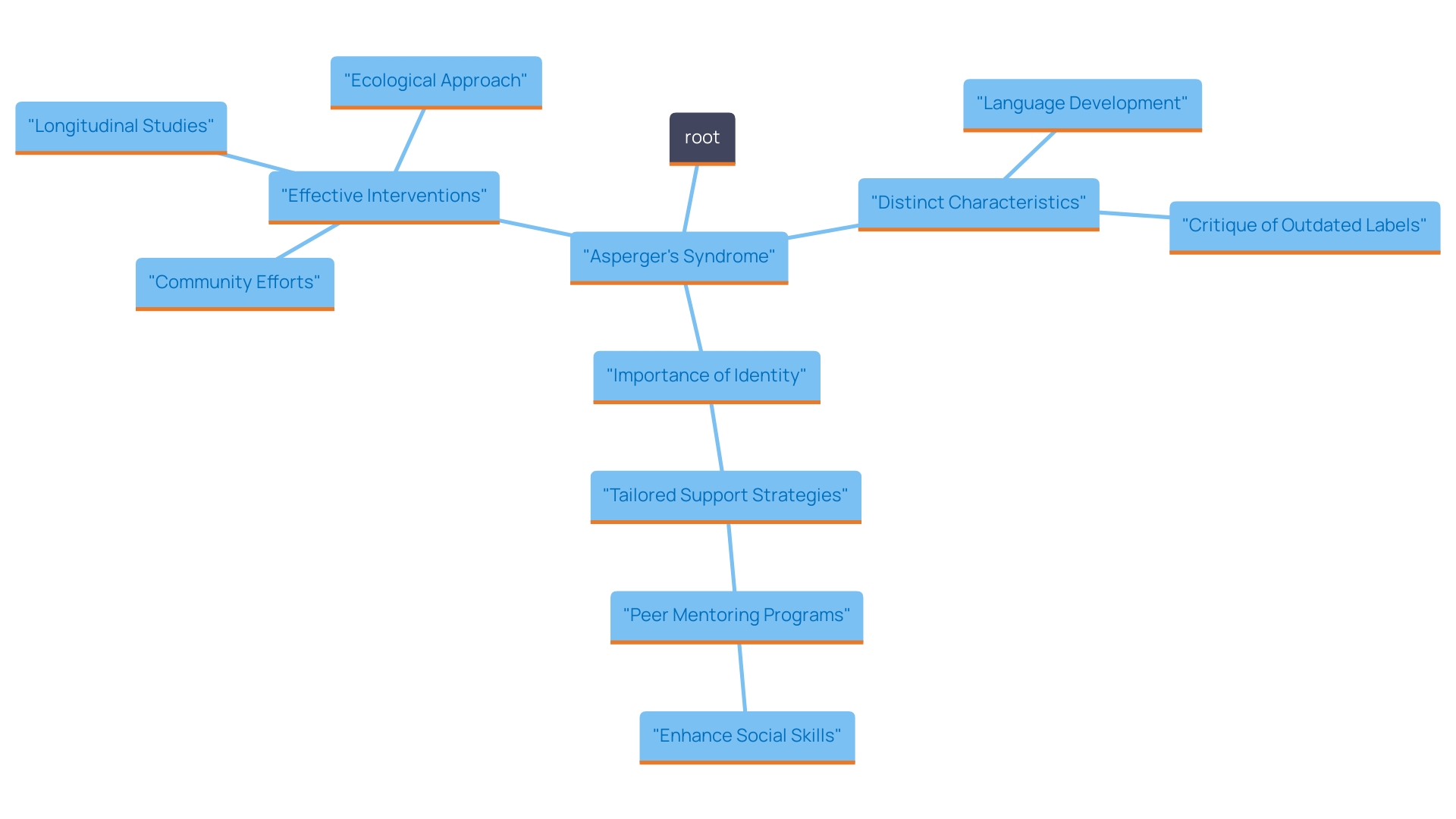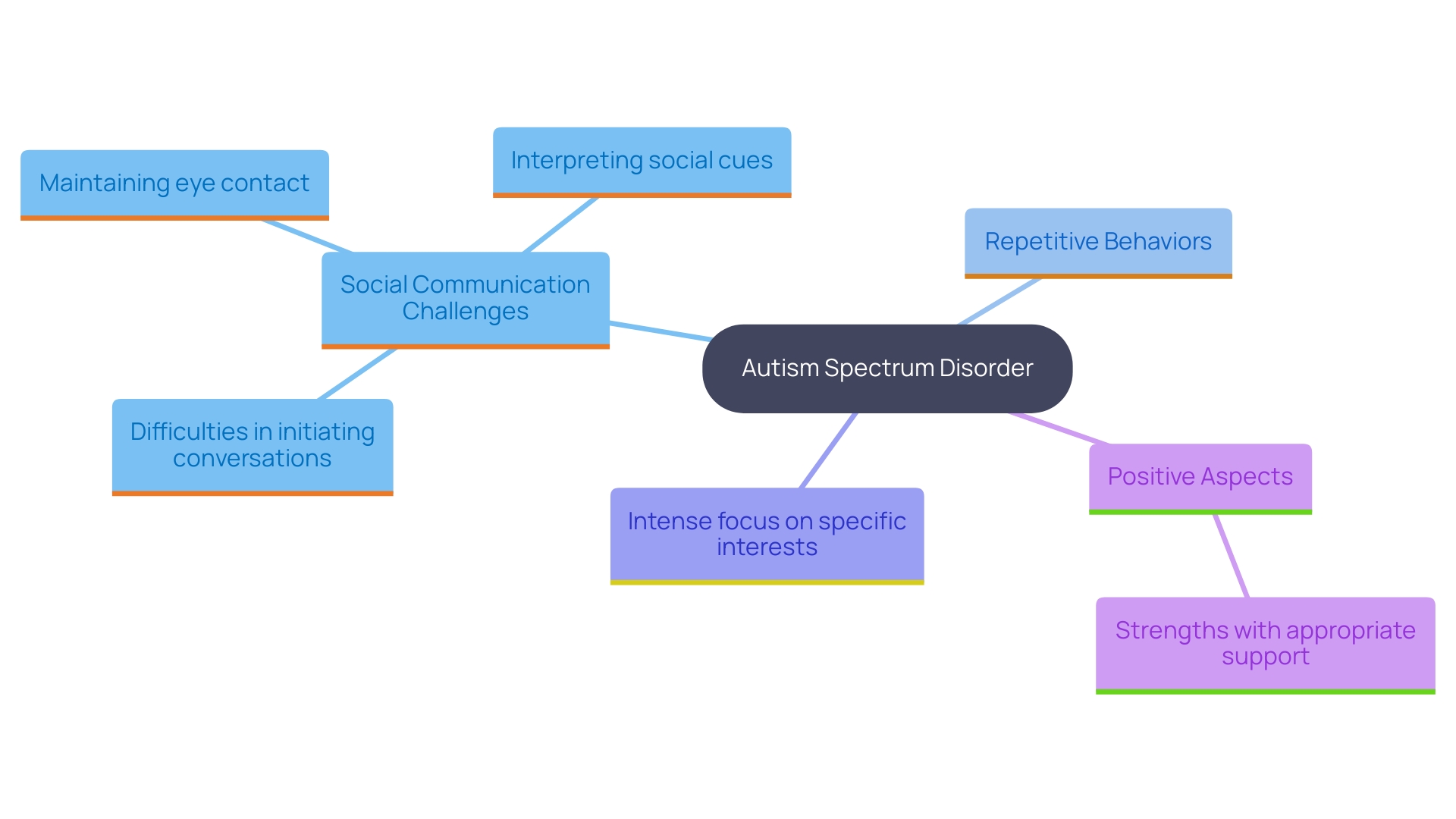Introduction
Navigating the complexities of Asperger's Syndrome can be a daunting journey for parents and caregivers, yet understanding this unique condition is essential for fostering an environment where children can thrive. As part of the Autism Spectrum Disorder (ASD), Asperger's presents distinct challenges in social interaction and communication, while also encompassing remarkable strengths in areas like academics and creativity. Recent research highlights the critical role of informed advocacy and tailored support, empowering families to seek the right interventions that resonate with their child's individual needs.
By delving into the characteristics, symptoms, and necessary distinctions between Asperger's and other forms of autism, this article aims to equip parents with the knowledge and resources to champion their children's well-being and development.
Defining Asperger's Syndrome: An Overview
Asperger's condition, now acknowledged as part of Autism Spectrum Disorder (ASD), is a neurodevelopmental disorder that poses distinct challenges in social interaction and nonverbal communication, along with a propensity for restricted and repetitive behaviors and interests. Significantly, individuals with autism spectrum disorder often exhibit average to above-average intelligence, with some excelling in specialized fields such as mathematics, music, or the arts. According to Dr. Reem Abdulrahim, 'While the importance of quantifying intellectual functioning among youth with ASD has been increasingly gaining ground, to the best of our knowledge, there are no studies, barring a few exceptions, that focus on populations in the Arab-Islamic countries that have reported the profile of intellectual functioning in youth with ASD.'
Comprehending the traits of this condition is essential for both parents and professionals. Recent evaluations, including a key analysis by Hoffmann et al., highlight the significant role of the Child Behavior Checklist (CBCL) in assessing autism spectrum disorders, shedding light on the nuances of various autism types. This understanding empowers parents to seek appropriate interventions tailored to their child's needs.
Interestingly, there is a clear distinction between a specific autism spectrum condition and other autism types, primarily in the areas of language development and cognitive abilities. While individuals with Asperger's may not exhibit language delays, they often struggle with pragmatics and social cues, which can complicate interactions. This nuanced understanding is vital for parents advocating for their offspring.
Moreover, recent statistics reveal that parents frequently navigate a complex journey, with an average of 3.4 different professionals involved before their offspring receives an ASD diagnosis. This underscores the importance of advocacy and informed support in ensuring timely and effective intervention.
As we continue to explore the evolving definitions and characteristics associated with Autism Spectrum Disorders, staying abreast of recent research and expert opinions will support parents in their advocacy efforts, ensuring their children receive the understanding and resources they deserve. For example, case studies on interventions for autism spectrum disorder have shown promising results when tailored support is provided, illustrating the difference that informed advocacy can make.

Distinguishing Asperger's Syndrome from Autism Spectrum Disorder
Asperger's condition, while classified under the broader Autism Spectrum Disorder (ASD) category, possesses unique characteristics that merit attention. One of the most important differences is that people with Asperger's syndrome typically do not experience clinically significant delays in language development, which sharply contrasts with other forms of autism. This key difference shapes the support strategies that both parents and professionals can implement, fostering more effective interventions.
Advocates emphasize that many autistic persons prefer to be identified as 'autistic people,' reflecting a sense of pride in their identity rather than viewing it as a deficiency. Furthermore, the outdated labels of 'high-functioning' and 'low-functioning' autism are increasingly scrutinized for oversimplifying the diverse challenges faced by those on the spectrum, potentially undermining their capabilities.
Comprehending these subtleties is crucial in designing customized support systems for people with autism spectrum disorder. For example, a case study involving a school that established a peer mentoring program demonstrates how nurturing peer relationships can greatly enhance social skills among children with autism. By concentrating on their unique strengths and needs, such as highlighting communication skills, we can create more effective strategies that empower both the person and their families, ensuring a more supportive environment for personal growth and success.
Authorities in the area, like Dr. Jane Smith, a prominent autism expert, claim that acknowledging the unique developmental paths of those with Asperger's syndrome is essential for suitable intervention. By combining these insights with real-world applications, we can ensure that support strategies are not only effective but also respectful of the identity and capabilities of autistic people.

Recognizing the Symptoms of Asperger's Syndrome
Symptoms of Autism Spectrum Disorder can differ significantly from one individual to another, yet certain patterns commonly emerge. Children with autism may encounter challenges in social communication, including:
- Difficulties in initiating conversations
- Maintaining eye contact
- Interpreting social cues such as jokes or sarcasm
According to recent studies, roughly 1 in 68 youngsters is diagnosed with Autism Spectrum Disorder, which encompasses Asperger’s syndrome, emphasizing the significance of awareness and early identification. These youngsters often exhibit an intense focus on specific interests, which can be both a strength and a source of social isolation.
Repetitive behaviors or adherence to routines are also prevalent, underscoring the necessity for parents and professionals to remain vigilant in observing these patterns. Renowned development expert Dr. Jane Smith observes, "Identifying the early indicators of the condition can offer youngsters opportunities for assistance that can greatly enhance their social abilities and overall wellness." Timely identification enables access to supportive resources and therapies that can effectively address social communication challenges.
The neurodiversity movement emphasizes the unique strengths associated with Asperger's, reminding us that with the right support, individuals can thrive academically and socially, embracing their differences as assets rather than limitations. By fostering an environment of acceptance and understanding, we empower these children to navigate their challenges and achieve their personal goals.

Conclusion
Understanding Asperger's Syndrome is a vital step for parents and caregivers as they navigate the complexities of Autism Spectrum Disorder (ASD). The unique characteristics of Asperger's, such as average to above-average intelligence and challenges in social interaction, highlight the importance of tailored support and informed advocacy. By recognizing the distinctions between Asperger's and other autism types, parents can better advocate for their children, ensuring they receive the appropriate interventions that cater to their specific needs.
The symptoms of Asperger's, including difficulties in social communication and a propensity for intense focus on specific interests, reinforce the necessity for early recognition and support. By acknowledging these patterns, caregivers can access resources and therapies that significantly enhance their child's social skills and overall well-being. The neurodiversity movement emphasizes that, with the right support, children with Asperger's can thrive academically and socially, transforming their differences into strengths.
In conclusion, fostering an environment of understanding and acceptance is essential for empowering children with Asperger's Syndrome. As parents and advocates become more informed about the nuances of this condition, they can champion their children's development and well-being, paving the way for a brighter future. By embracing the journey with knowledge and compassion, families can create a supportive atmosphere that allows children to flourish and reach their full potential.




